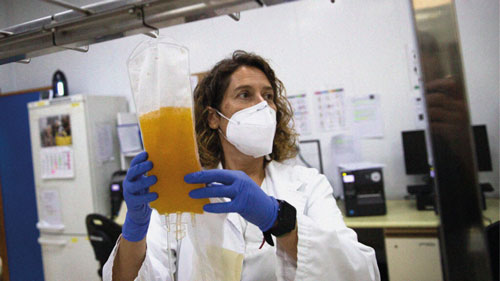BLOOD plasma from people who have recently recovered from an infection, which experts call convalescent plasma, contains antibodies that can potentially tackle the same infection in others.
Some hospitals have been using convalescent plasma to treat Covid-19, although the evidence for its efficacy in critically ill patients is limited.
A large study has now concluded that the treatment does not provide any benefits for critically ill patients, with the possible exception of those with weakened immune systems.
Proponents of the therapy argue that convalescent plasma can save lives if given early enough, before the onset of the inflammatory phase of the disease.
Healthcare professionals have been using plasma from patients who have fought off an infection, known as convalescent plasma or passive antibody therapy, for almost a century to combat bacterial and viral infections, including influenza and EbolaTrusted Source.
In August 2020, the Food and Drug Administration (FDA) issued an emergency use authorization, which was updated in February 2021Trusted Source, for convalescent plasma to treat patients hospitalized with Covid-19.
In the United States alone, around half a millionTrusted Source people with Covid-19 had received the treatment by March 2021.
In May 2021, however, the RECOVERY trialTrusted Source and a review of research reported that convalescent plasma provided little or no benefit for patients hospitalized with Covid-19.
Stay informed with live updates on the current Covid-19 outbreak and visit our coronavirus hub for more advice on prevention and treatment.
A newly published clinical trial that involved 129 sites in Australia, Canada, the U.S., and the United Kingdom has now added further evidence that the treatment does not improve the survival chances of critically ill patients.
The trial, which was part of the ongoing REMAP-CAP trial, randomized 2,011 critically ill patients with confirmed Covid-19 to receive either convalescent plasma or normal care.
The researchers ended the trial after concluding that the treatment did not reduce the number of days that patients remained alive and free of organ support, with a “probability of futility” of 99.4%.










